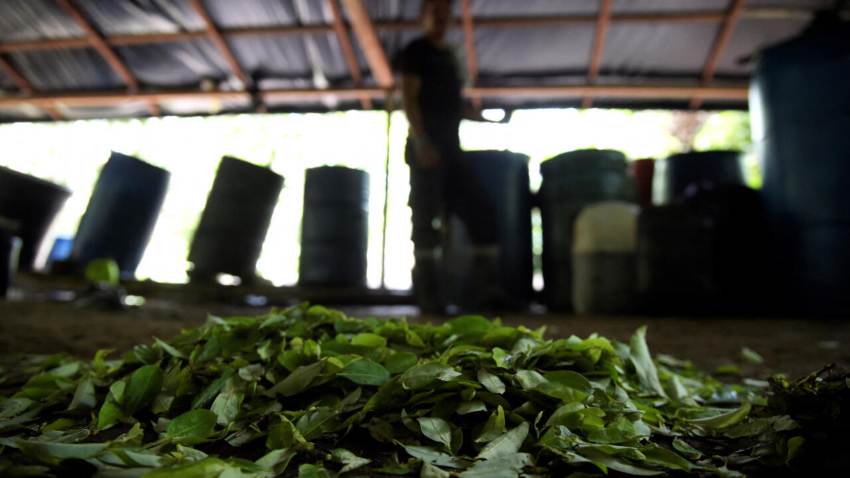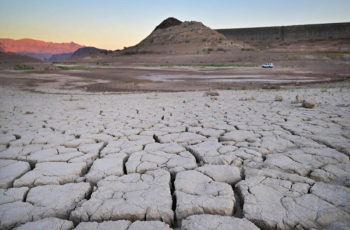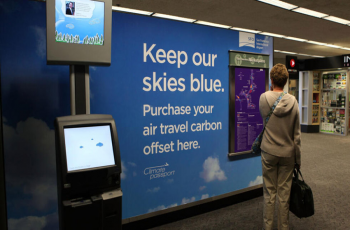Cocaine production hits record high as post-Covid demand picks up in Europe
Global production of cocaine has jumped dramatically over the past two years following an initial slowdown caused by the Covid-19 pandemic

Photo: TYT
Global production of cocaine has jumped dramatically over the past two years following an initial slowdown caused by the Covid-19 pandemic, according to the first report dedicated to the global cocaine market from the United Nations Office on Drugs and Crime (UNODC).
Cultivation of coca, the leaves of which are used to make the drug, reached a record high by soaring 35% from 2020 to 2021, the report released on Wednesday said.
Bolivia, Colombia and Peru – which have historically dominated the production of coca leaves – altogether cultivated an area of more than 300,000 hectares in 2021, UNODC said.
Once harvested, a paste obtained by mixing chopped leaves with lime, cement, gasoline, and ammonium sulfate, is usually taken elsewhere to be turned into cocaine.
"The surge in the global cocaine supply should put all of us on high alert," says UNODC Executive Director Ghada Waly.
New trafficking routes
The steep growth in supply has been matched by increase in global demand for the drug over the past decade.
The world’s largest cocaine markets are traditionally concentrated among the wealthy populations of the Americas and parts of Europe. Cocaine is the second most commonly used illicit drug in Europe, behind cannabis, with an estimated 3.5 million adults in Europe using the drug in 2021.
During the Covid pandemic, wastewater analysis suggested that there was a slight reduction in cocaine use that correlated with restrictions that closed nightlife and entertainment settings.
However, an annual report from the UNODC in 2022 found that use has largely returned to pre-pandemic levels, and is expected to increase. “There are currently no signs that the upward trend in the availability of this drug, observed over the last few years, has changed,” it says.
Increasing cocaine shipments to Europe to meet surging demand has created new trafficking routes around the world.
Traffickers are becoming less reliant on Columbia as a point of departure and are increasingly transiting product through Central America and other countries in South America. Meanwhile, Africa and southeastern Europe are emerging as new trafficking hubs for supplies in transit to Western Europe, the UNODC report found.
And cocaine is increasingly arriving directly from trafficking hubs to northern European ports. Cities such as Rotterdam and Hamburg "have eclipsed traditional entry points in Spain and Portugal for cocaine" arriving in Western Europe, it says.
Seizures, ‘narco-tourism’
Interceptions of cocaine shipments by law enforcement agencies around the world have also risen sharply, with seizures reaching a record high of nearly 2,000 tons in 2021.
In France, the government said in March that it had seized 27 tonnes of cocaine last year, a five-fold increase over the past 10 years.
In 2022, seizures went up 5% compared with 2021, according to Interior Ministry figures, with more than half of the narcotic coming from the West Indies and French Guiana in South America.
In a large-scale seizure on November 20, the French navy intercepted a Brazilian vessel carrying more than 4.6 tonnes of cocaine in international waters off the coast of Sierra Leone.
In early March, sealed bags containing 2.3 tonnes of cocaine, worth an estimated 150 million euros, washed up on the northern French coast.
Police were uncertain whether traffickers threw the drugs overboard deliberately to avoid arrest, or whether it came loose from their boats in heavy weather.
As residents of villages along the Normandy coast described an influx of unfamiliar people in luxury cars and 4x4s scouring the sand, local authorities issued a public warning about the risks of taking part in what they described as “narco-tourism”.
“The act of taking possession of one of these bundles and transporting it is a crime that carries a punishment of up to 10 years in prison,” local prosecutor Philippe Astruc told reporters.
Crime networks
Global cocaine manufacture reached an estimated 2,000 tons in 2020, continuing a "dramatic uptick" in production that began in 2014, when the total was less than half of today's levels, the report said.
Growth of the global amount of cocaine available for consumption has been contained as interceptions by law enforcement have increased.
Yet increasing purity levels of the drug remain a concern, as the availability of stronger and more dangerous product was found to be a driving factor in an increase in deaths and hospitalisations in Europe pre-pandemic.
The purity of cocaine available on the European market has increased sharply in the past decade, and in 2020 reached a level 40% higher than the index year of 2010.
Although global law enforcement efforts are mitigating consumption overall, they are still failing to cut off a complex, global network of criminality stretching from international groups to individual actors.
In Columbia, improved efficiency of production is thought to be due to the growing presence of Mexican and Balkan criminal groups since the demobilisation of the guerrilla group FARC.
Willing groups of port workers, transport companies and customs officials in Central and South America are as essential as Nigerian networks made up of interconnected cells that dominate smuggling activities in northwest Africa.
In Belgium, motorcycle gangs are hired as transport providers, and in France, more than a sixth of the cocaine consumed is smuggled inside the bodies of drug mules, often lured into the trade through poverty.
There is still room for this complex criminal network to grow. While the cocaine market remains quite concentrated in the Americas and parts of Europe, the report warns that there is a strong potential for a large expansion in Africa and Asia.
-

Moldovan youth is more than ready to join the EU
2024-04-18 -

UN says solutions exist to rapidly ease debt burden of poor nations
2024-04-18 -

'Human-induced' climate change behind deadly Sahel heatwave: study
2024-04-18 -

Climate impacts set to cut 2050 global GDP by nearly a fifth
2024-04-18 -

US sterilizations spiked after national right to abortion overturned: study
2024-04-13 -

Future of Africa's flamingos threatened by rising lakes: study
2024-04-13 -

Corporate climate pledge weakened by carbon offsets move
2024-04-11 -

Humanity lost 'moral compass' on Gaza: top UN official
2024-04-10 -

No.1 Scheffler says patience and trust are secrets to success
2024-04-10 -

From homeless addict to city chief: the unusual journey of Canadian mayor
2024-04-10
